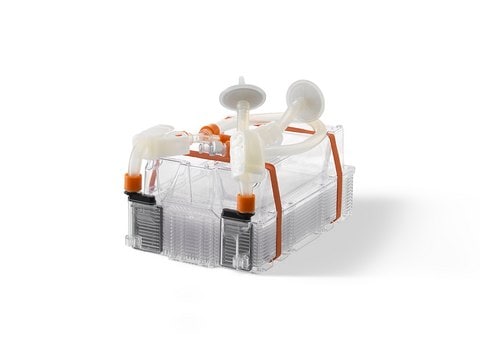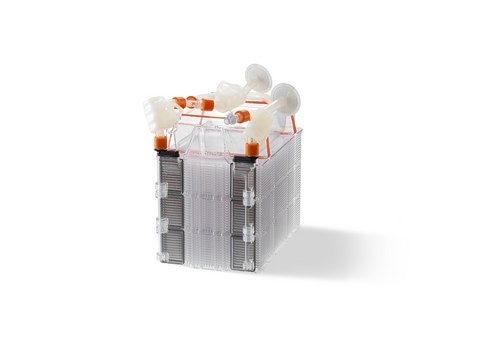CLS10031
Corning® HYPERStack cell culture vessel
surface (non-treated), sterile
Sinónimos:
cell culture bioreactors, cell culture flasks, cell culture vessels
About This Item
Productos recomendados
material
flat cap
high-density polyethylene cap
rectangular bottom flask
straight neck
sterility
sterile
feature
cap
barcoded
packaging
case of 4 ea
manufacturer/tradename
Corning 10031
flask surface area
(1720 cm2)
flask working volume
(560 mL)
surface area
1720 cm2
binding type
non-treated surface
compatibility
designed for manual cell culture applications
¿Está buscando productos similares? Visita Guía de comparación de productos
General description
Application
Features and Benefits
- Ergonomic Cap: The liner cap of the vessel features a smooth texture, allowing for more ergonomic opening and closing by the operator.
- Adaptor Grid: The new design of the adaptor grid enables faster filling and emptying of the vessel while reducing foam generation.
- Bar Coded: Each individual flask is barcoded for easy reading by the unaided eye or a handheld bar code reader, enabling traceability.
- Crafted with USP Class VI Materials: The flasks are manufactured and assembled in a Certified Class 100,000 clean room using materials that meet USP Class VI standards.
- Sterile: The flasks undergo gamma irradiation to achieve a sterility assurance level (SAL) of 10-6, ensuring their sterility.
- Clean Room Packaging: Each pack of flasks is double bagged to maintain cleanliness during transportation and storage.
- Innovative 10-Layer Design: The flasks feature a unique 10-layer design with interconnected polystyrene growth surfaces.
- Increased Cell Yield: The innovative design results in a 10-fold higher cell yield, significantly increasing productivity and capacity.
- Time and Space Savings: By handling a single flask instead of 10 traditional 175 cm² flasks, processing time and incubator storage space are reduced, leading to time and space savings.
Legal Information
Certificados de análisis (COA)
Busque Certificados de análisis (COA) introduciendo el número de lote del producto. Los números de lote se encuentran en la etiqueta del producto después de las palabras «Lot» o «Batch»
¿Ya tiene este producto?
Encuentre la documentación para los productos que ha comprado recientemente en la Biblioteca de documentos.
Nuestro equipo de científicos tiene experiencia en todas las áreas de investigación: Ciencias de la vida, Ciencia de los materiales, Síntesis química, Cromatografía, Analítica y muchas otras.
Póngase en contacto con el Servicio técnico




